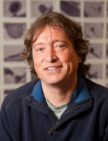A dose of fact
jstewardThe history of cannabis is full of myths and hype, and that’s never been more true than the present moment as medical science tries to catch up with capitalism.

Medical marijuana is now legal in 22 states, while recreational use is legal in 11. A tide of claims about the plant’s healing powers has accompanied its rise in acceptance. If you believed the pervasive advertising, you might think THC and CBD are miracle cure-alls for anything that ails you.
The truth is, there are very few scientific studies to substantiate claims at this time, said Rebecca Craft, one of dozens of researchers at Washington State University studying cannabis.
On Tuesday, Craft will share what is known in the talk “Marijuana: Evil Weed or Medical Miracle” at Basalt Cellars in Clarkston as part of the Wine and Wisdom series organized by the Asotin County Library.
Because of cannabis’ federally regulated status, it has been difficult for scientists to do controlled testing on humans, Craft said. Instead, most of the testing has been done on animals and extrapolated to humans.
“Unfortunately, right now the list of what we don’t know is considerably longer than the list of what we do know,” said Craft, who has spoken around the state as part of Humanities Washington programs. In a preview to Tuesday’s discussion, the professor shared some facts with Inland 360.



